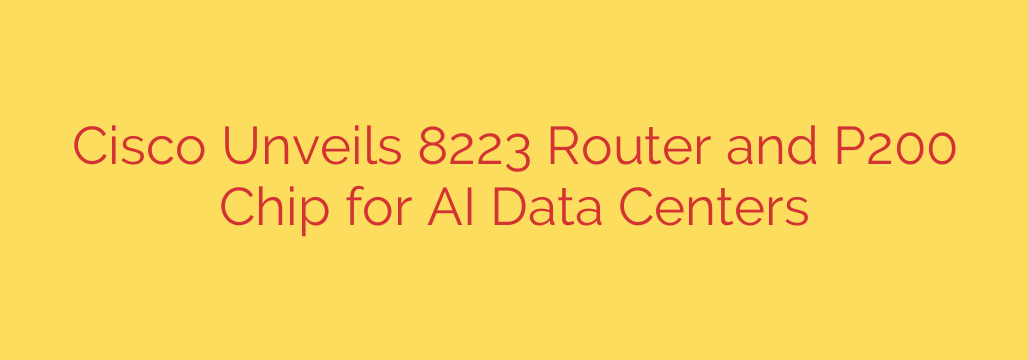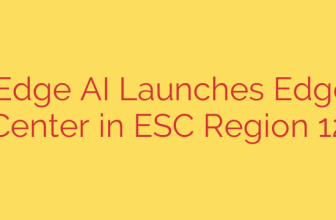
Cisco’s New Silicon Unlocks Peak Performance for AI Networks
The relentless growth of artificial intelligence is placing unprecedented demands on data center infrastructure. As AI and machine learning (ML) models become more complex, the networks connecting powerful GPU clusters are turning into critical bottlenecks, limiting performance and wasting valuable resources. Addressing this challenge head-on, Cisco has introduced powerful new hardware designed to streamline AI workloads and maximize efficiency.
At the heart of this innovation are a new packet processor, the Cisco P200, and a high-performance router, the Cisco 8223. Together, they form a robust solution engineered to handle the unique traffic patterns of AI data centers.
The Unique Challenge of AI Networking
Traditional data center traffic is often characterized by short, bursty flows of information. AI/ML training, however, is completely different. It relies on massive, sustained data transfers known as “elephant flows.” These long-lived flows can easily overwhelm standard network switches, leading to congestion, packet loss, and a significant slowdown in what’s known as Job Completion Time (JCT).
When the network can’t keep up, expensive GPUs are forced to sit idle, waiting for data. This inefficiency directly impacts the return on investment for any organization building out its AI capabilities. Solving this congestion problem is paramount to unlocking the full potential of modern AI infrastructure.
Meet the Cisco P200: An Air Traffic Controller for AI Data
The standout component of the new lineup is the Cisco P200 PPU (Packet Processor Unit). This specialized chip functions as a highly intelligent scheduler and load balancer, acting like an air traffic controller specifically for AI data flows.
Instead of letting the main network fabric get bogged down managing these massive elephant flows, the P200 takes over. Its primary responsibilities include:
- Intelligent Load Balancing: The P200 dynamically manages and distributes data traffic across the GPU cluster, ensuring each processor is fed data efficiently.
- Congestion Elimination: By proactively scheduling data packets, the P200 prevents the network collisions and bottlenecks that degrade performance.
- Maximizing GPU Utilization: Its core purpose is to ensure that GPUs are consistently engaged in computation rather than waiting for data, drastically improving overall efficiency and shortening job completion times.
By offloading this complex task to a dedicated processor, the entire network can operate more smoothly and predictably, even under the most demanding AI training loads.
Power and Density: The Cisco 8223 Router
Complementing the P200 is the new Cisco 8223 router, a compact yet powerful platform built on the Cisco Silicon One architecture. This router is designed to provide the raw bandwidth and performance necessary for modern AI fabrics.
Key features of the 8223 router include:
- Massive Bandwidth: It delivers an impressive 28.8 Tbps of network bandwidth, providing the capacity needed to connect large-scale GPU clusters.
- Compact Form Factor: All this power is packed into a single rack unit (1RU) chassis, offering exceptional density for space-constrained data centers.
- Enhanced Power Efficiency: Built with the new Silicon One G202 chip, the router is optimized for lower power consumption—a critical consideration for data centers where energy costs are a major operational expense.
The Strategic Advantage of Open Ethernet
Cisco is championing an Ethernet-based approach to AI networking. While proprietary solutions like InfiniBand have seen adoption in high-performance computing, Ethernet offers the significant advantages of being an open, widely understood, and interoperable standard. This allows organizations to avoid vendor lock-in and leverage a broader ecosystem of tools and talent. By enhancing Ethernet’s capabilities for AI, Cisco aims to make it the de facto standard for the next generation of data centers.
For organizations investing heavily in AI, optimizing the underlying network is no longer optional. By focusing on the unique demands of AI workloads, these new hardware solutions promise to reduce training times, lower operational costs, and ultimately accelerate the pace of innovation.
Source: https://datacenternews.asia/story/cisco-launches-8223-router-p200-chip-for-ai-data-centres








